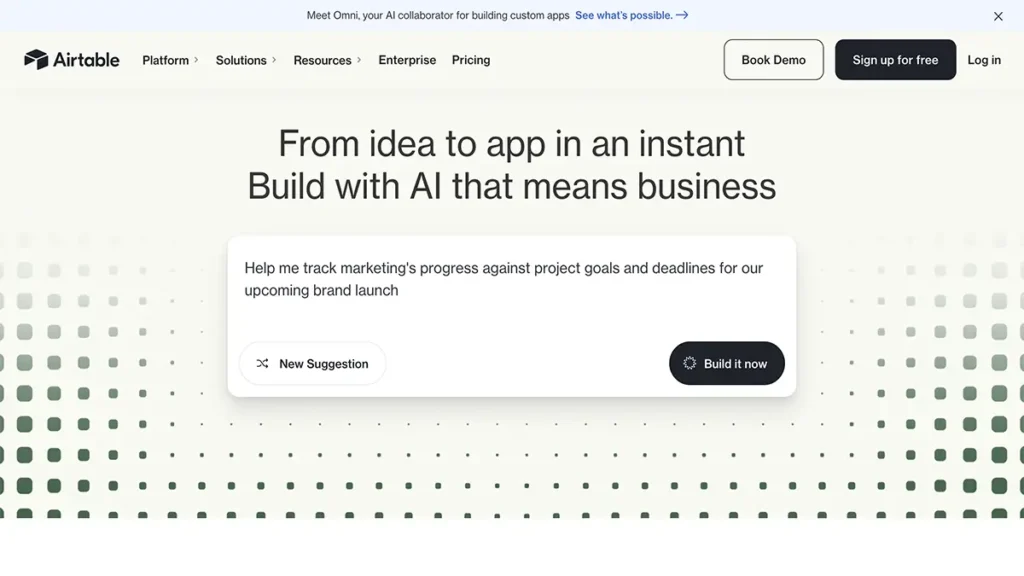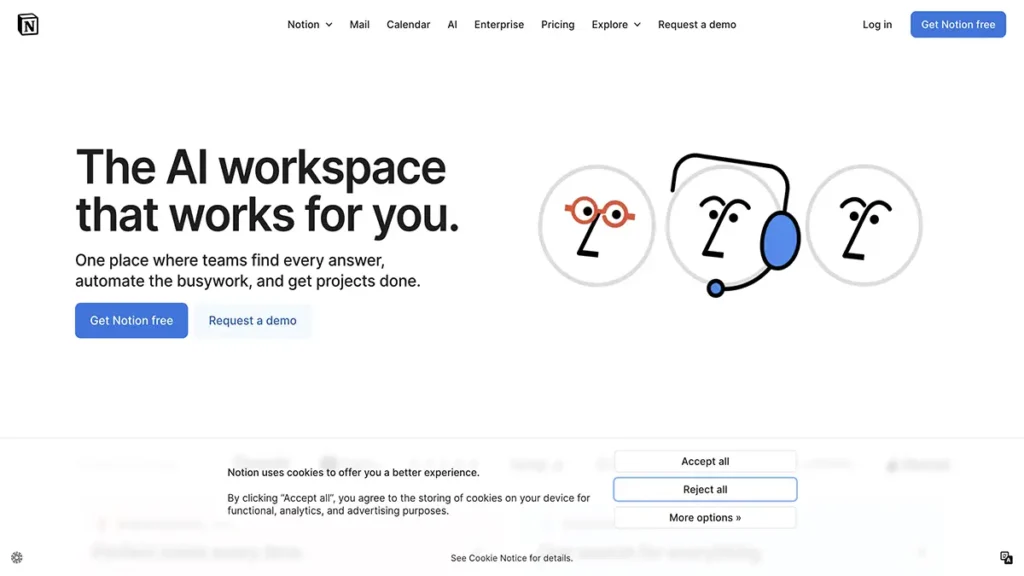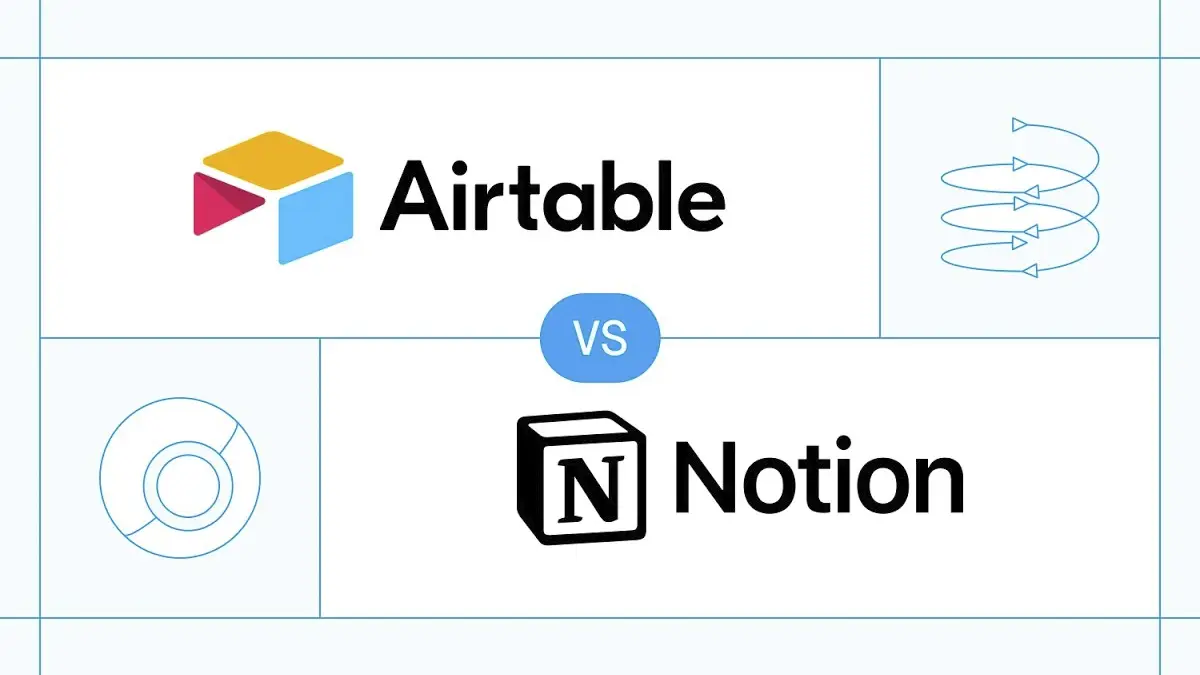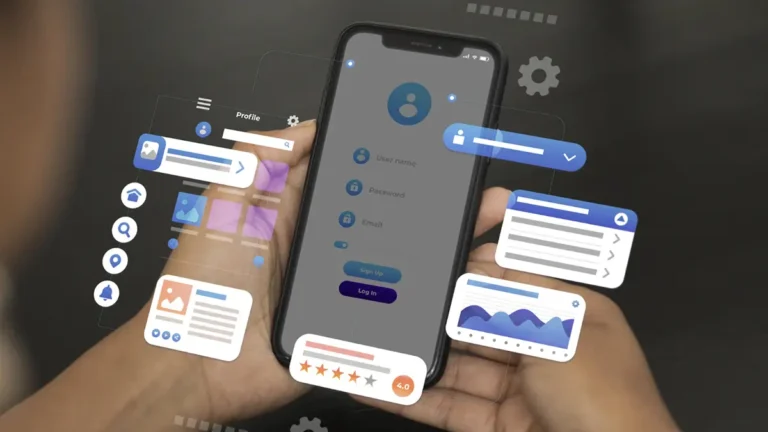Airtable vs Notion: Which Tool is Right for Your Workflow in 2025?
Airtable vs Notion is a common decision point for teams building fast, flexible workflows. The wrong choice can slow you down, create confusion, and hurt execution.
At FoundingStartups, we’ve used both tools to manage real projects, track clients, and build content systems. We’ve seen how each tool fits different team styles and work habits.
This guide shows you what actually works based on hands-on experience so you can choose the right tool and stay focused on what matters.
Choosing the Right Tool: Your Workflow Needs

A few months ago, we were helping a small remote team set up their daily workflow. They had clients in three different time zones, constant updates, and no central system. Every task was getting lost in emails and scattered notes. They asked us what the best tool for managing clients was and that’s where the Airtable vs Notion debate began.
We have tested both tools inside their setup. Each team member had different needs. Some wanted structure. Others needed flexible notes and docs. It was clear that choosing the wrong tool for collaboration is one of the reasons startups fail early. So we made a call based on how they worked, not just features.
How We Made the Decision
• We listed their top tasks like client updates, deadlines, and notes.
• We mapped which tool handled those tasks faster with fewer clicks.
• We tracked which one saved them the most time over two weeks.
That real-world test made the decision simple and saved them hours every week.
What is Airtable?

Airtable is a tool that looks like a spreadsheet but works like a smart database. You can manage projects, follow tasks, and store client details in one neat space. Many startups like Airtable because it’s easy to use and works in different ways. It’s often recommended in startup-focused automation guides for teams that need speed and structure.
Behind the scenes, what kind of database Airtable uses is a relational one. This lets you link different tables, just like in a real CRM, but without writing code or using tech jargon. You can explore more in the official Airtable guide.
What you can do with Airtable
• Build smart spreadsheets with connected tables.
• Create workflows using automation tools.
• Track leads and contacts with built-in templates.
• Work with your team in real time.
• Connect with more than 1,000 apps without writing any code.
Key Features and Strengths
- Templates that come with it, like the Airtable CRM template free, help you begin fast.
- Drag-and-drop fields make customizing your database simple.
- You can change between grid, Kanban, calendar, and gallery views anytime.
- You can chat using comments and @mentions to keep your team working together live.
- Easy linking between tables works like relationships in traditional databases.
- Airtable Automations let you set up actions like sending emails or updating records.
- Syncs with Google Calendar, Slack, and more without needing code.
- The mobile app gives full access to your workspace on the go.
- You can invite unlimited collaborators even on the free plan.
- Frequent updates and a growing template library support fast use for startups.
Best Use Cases: From Databases to CRM
You can use CRM Airtable setups for more than just contacts and sales. Many teams build internal tools, content calendars, and inventory trackers. Because Airtable allows attachments, checkboxes, and filtered views, it works nicely for any setup with structured data. If you need structured workflows, Airtable pairs well with automation software like Zapier or Make. It becomes a helpful tool for startups, marketers, project managers, and teachers who work with student or course data in one spot. You can change it to match any workflow without needing to hire a developer.
What is Notion?

Notion helps you write things down, make plans, and organize everything in one place. You can use it to make notes, manage to-dos, set calendars, and keep documents safe. Whether you work by yourself or with others, it gives you a place to keep your things neat and easy to find. You can use text, photos, checklists, and other stuff all in one place.
What is the point of Notion?
It gives you control. Instead of using different apps for tasks, notes, and projects, you can do everything in Notion. See it as a plain space you can design. You decide what to build. Want a to-do list? A habit tracker? A content calendar? You can create it with simple drag-and-drop blocks.
Here’s what you can do with Notion:
- Take daily notes and link them to projects.
- Build a personal or team wiki.
- Track tasks with Kanban boards or tables.
- Plan projects with timelines.
- Store documents and media in one spot.
- You can work with your teammates while seeing changes.
Key Features and Strengths
We have used Notion for startup content planning, and it has helped both single creators and full teams. You can do all your planning, writing, and work in one spot without using many apps. This makes it a good choice for people who want to work in their own way. It’s also good for teams who want tools that are easy to use and strong.
Key strengths of Notion project management:
- Flexible boards, calendars, and lists in one place.
- Drag-and-drop tasks for easy updates.
- Custom templates for content, goals, or client work.
- Real-time edits and comments for teamwork.
- Easy database views for tracking deadlines or deliverables.
- You can connect it with tools like Slack, Google Drive, and many others.
Using Notion for project tasks can help teams save time, stay clear, and focus better. It’s best for startups, freelancers, and content teams who need a clear setup they can control.
Best Use Cases: Docs, Wikis, and Collaboration
Notion is best when your team needs one place to keep docs, wikis, tasks, and shared plans. You can write and edit together, leave comments, and link pages inside other pages. It feels like Google Docs but more organized and flexible. This makes it a strong pick for teams that want clean and connected content spaces while keeping things simple and professional.
Best uses for Notion
• Building team documentation and company wikis.
• Creating and managing shared to-do lists.
• Planning blog content or product updates.
• Making internal guides and SOPs.
• Notion is ideal for building wikis, internal docs, or even your startup marketing plan.
Airtable vs Notion: Feature Comparison Table
| Feature | Notion | Airtable |
| Ease of Use | Simple drag-and-drop interface | Spreadsheet-like, familiar for Excel users |
| Startup-Ready | Great for docs, wikis, and project planning | Ideal for building MVPs and automations |
| No-Code Support | Limited but growing (buttons, templates) | Strong no-code tools (Automations, Apps) |
| Database Features | Basic databases, easy linking | Advanced relational databases |
| Collaboration | Real-time editing, comments, mentions | Real-time updates, role-based access |
| Design Flexibility | Clean and customizable pages | More structured, less creative control |
| Integrations | Fewer native integrations | Rich set of integrations via extensions |
| Learning Curve | Beginner-friendly | Slightly steeper for complex builds |
Case Studies

Use Case #1 – Project Management
Airtable is best when you’re working on big projects with lots of things to handle. Its grid view is easy like a spreadsheet but has the power of a database. You can connect tasks, choose who does them, set due dates, and see them in Kanban or calendar view. This makes Airtable project management useful for startups handling campaigns, launches, or product development.
Notion gives you a page where you can see and do many things at once. You can keep your tasks, dates, and notes together on the same screen. If your team is small and likes things easy, Notion for project management puts everything in one place. You can embed databases and comment directly on updates.
Quick summary
• Airtable works best for structured, data-heavy task tracking.
• Notion is ideal for light planning and content-driven projects.
• Airtable fits ops-heavy teams.
• Notion fits creative and remote-first teams.
Use Case #2 – CRM & Client Management
Why Teams Use CRM Airtable
You can use Airtable to watch your leads, sales, and follow-ups all in one place. You can design your CRM exactly how your team works without needing any code.
- Customizable fields for contacts, deals, and tasks.
- Linked records for better client timelines.
- Automations for emails and reminders.
- Integrates with forms, Gmail, and Slack.
- Great for startups and fast-moving teams.
Is Notion the Best Tool for Managing Clients?
Notion is good for people who offer services or work alone. They can keep notes, calendars, and info in one spot. It’s not a full CRM, but for relationship tracking and client notes, it’s simple and easy.
- Client pages with meeting notes and files.
- Tag clients by status or priority.
- Add timelines or task boards.
- Share pages with clients or teammates.
- Notion is also useful for managing relationships and documenting your customer retention strategies.
Automation & Integration Comparison
Airtable Automation and Integration
- Airtable connects smoothly with tools like Zapier, Make, and Whalesync.
- You can create automations with triggers and actions inside Airtable.
- Works well for sending data to Slack, Google Sheets, and Gmail.
- Supports webhooks and custom scripts for advanced workflows.
- FoundingStartups tested airtable notion integration using Whalesync.
- Syncing worked in real-time for contacts and tasks without manual updates.
Notion Automation and Integration
- Notion now supports APIs and connects with Zapier and Make.
- Best suited for simple automation like adding new pages or updating fields.
- Whalesync can mirror Notion databases with Airtable or Webflow.
- During our test, airtable notion integration had a slight delay in syncing large content blocks.
- Notion still lacks native automation, so external tools are required.
- Great if you’re using Notion mainly for docs and task boards.
This test shows that Airtable wins in automation power, while Notion focuses more on flexibility and connected content.
AI Tools & Integration in Airtable vs Notion
Airtable AI & Integrations
Airtable now includes AI tools built into the platform. You can use AI fields to summarize data, draft content, or tag records automatically.
- AI features require Business Plan + $6/user/month.
- Use AI to analyze tasks, clean data, or auto-tag entries.
- Works well with Airtable Automations, Zapier, Make, and Whalesync.
- Supports webhooks, custom scripts, and over 1,000 app connections.
Airtable is strong for users who want logic-driven AI workflows connected to data.
Notion AI & Integrations
Notion AI acts like an assistant inside your workspace. It can help you:
- Write summaries, generate task lists, and improve text.
- Brainstorm ideas or rewrite meeting notes.
- Costs around $6/user/month as an add-on to paid plans.
- Best for teams focused on writing, notes, and planning.
- Notion integrates with Zapier, Make, and Whalesync for database syncing.
While Notion’s AI is content-focused, Airtable’s is better for structured data and automation.
Pros and Cons of Each Tool
Airtable
Pros
- Easy to understand if you’re used to spreadsheets.
- Custom views for better task or team management.
- Works well with automation tools like Zapier.
- Built-in templates speed up setup.
- Great for project tracking and CRM.
Cons
- Fewer formatting options compared to Notion.
- Limited text editing features.
- May feel too simple for deep documentation.
- Paid plans get expensive with more collaborators.
Airtable is a better pick if you want speed, structure, and a familiar layout.
Notion
Pros
- Flexible and good for documentation.
- Easily link notes, pages, and databases.
- Clean user interface.
- Great for team wikis and content calendars.
- Works well for Customer Retention Strategies and SOPs.
Cons
- No native relational database features like Airtable.
- Can slow down with heavy content.
- Takes time to learn nesting and blocks.
- Basic project views feel limited compared to Airtable.
Notion works best if your focus is writing, knowledge sharing, or content planning.
Airtable vs Notion: Which Should You Choose?
Choose Notion if you:
- Want a flexible all-in-one workspace.
- Prefer a note-style interface for planning.
- Need a mix of docs, tasks, and databases.
- Like customizing pages visually.
- Don’t require advanced spreadsheet logic.
Choose Airtable if you:
- Need a powerful spreadsheet-style database.
- Manage tasks with deep filtering and sorting.
- Rely on detailed reporting and tracking.
- Use structured workflows and templates.
- Want more advanced automation options.
Decision Matrix Airtable vs Notion:Pricing Comparison in 2025
| Plan | Airtable (per user/month) | Notion (per user/month) | Key Notes |
| Free | $0 | $0 | Basic limits; good for individuals |
| Team / Plus | $20 (Team) | $8 (Plus) | For small teams |
| Business | $45 | $15 | Adds analytics, admin features |
| Enterprise | Custom pricing | Custom pricing | For large organizations |
| AI Add-on | $6 | $6 | Requires paid plans |
Decision Matrix: Notion vs Airtable for Project Management
| Feature/Need | Best Tool | Why It Wins |
| Simple content planning | Notion | Great for pages, notes, and task checklists |
| Structured project tracking | Airtable | Handles complex data and workflows |
| Visual customization | Notion | Easy to build and design flexible layouts |
| Spreadsheet-style control | Airtable | Offers formulas, filters, and advanced views |
| Team knowledge base | Notion | Organizes docs, SOPs, and shared resources |
| Automation and integrations | Airtable | Supports more built-in automations |
| Lightweight task tracking | Notion | Combines notes and to-dos in one place |
| Data-heavy task management | Airtable | Better for tasks with detailed metadata |
Bonus Tip – Use Airtable and Notion Together
You don’t always need to pick one tool. Many teams use both together by setting up Airtable Notion integration. This gives you Airtable’s structured database features along with Notion’s flexible notes and docs.
Tools like Zapier and Whalesync make the connection easy.
Here’s how you can use both:
- Plan tasks and track progress in Airtable.
- Store meeting notes and documentation in Notion.
- Use Zapier to automate updates across both tools.
- Try Whalesync to sync databases in real time.
Want to set this up? Follow this Whalesync integration guide.
Using both platforms together can simplify how you manage data, notes, and tasks in one flow.






